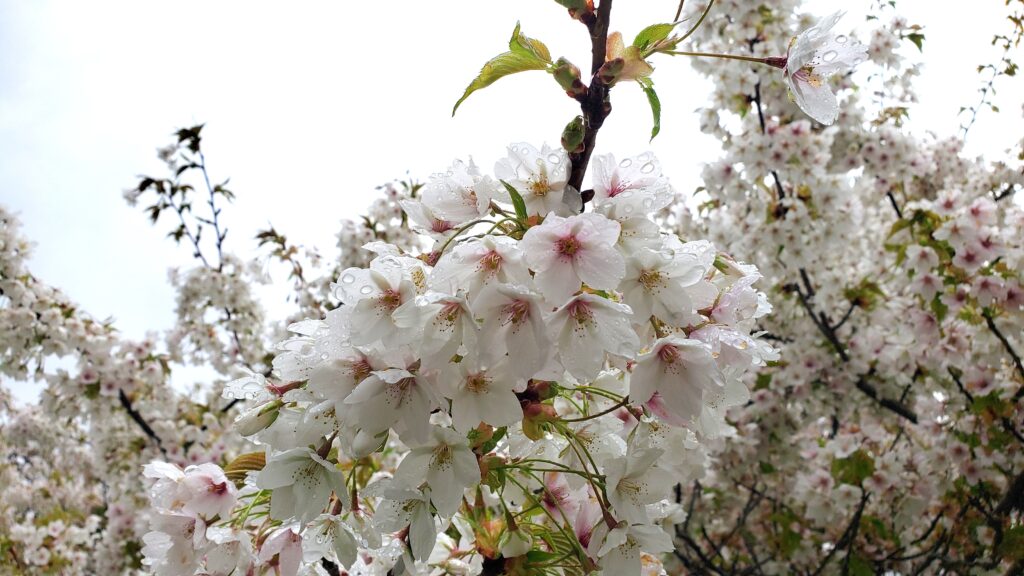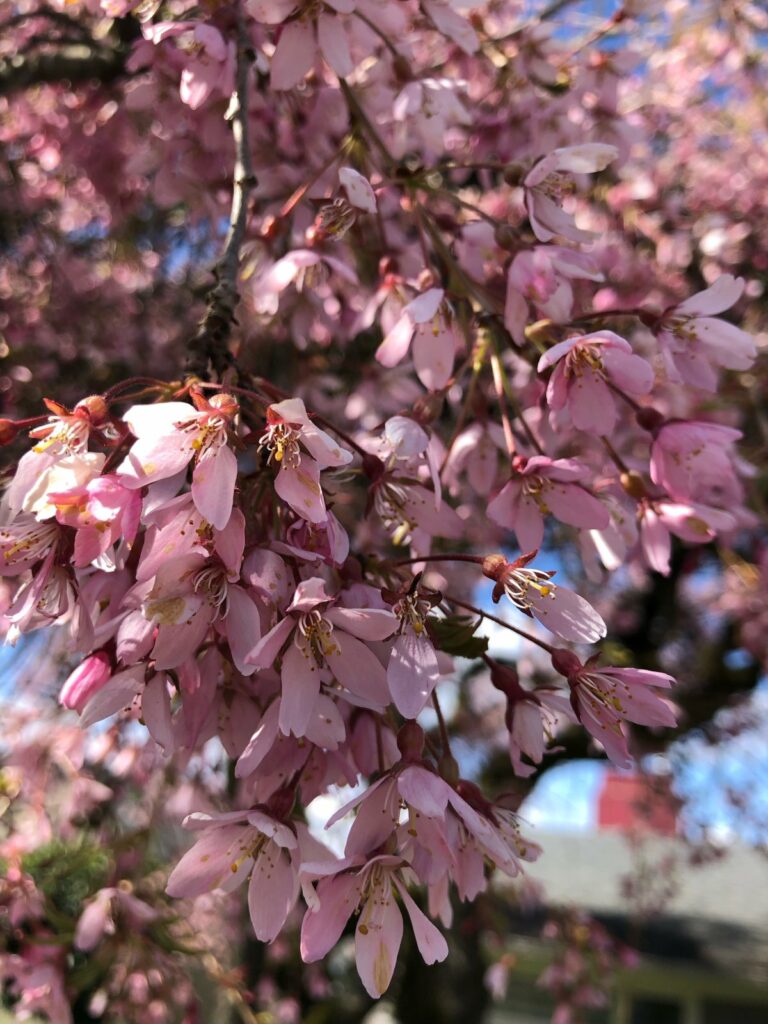May 13, 2023. The most interesting, most magical, longest in bloom cherry tree around right now is ‘Shiro-fugen’. These opened with white flowers and bronze leaves. Many still had white flowers when the leaves started to turn green. Then the flowers started to turn luminescent pink from the centres. Eventually, the trees are becoming ‘Kanzan’-coloured pink, with green or bronzy-green leaves. Yet new flowers keep opening, white, so it’s easy to see them when you’re looking closely at the flowers. From close-up, the ‘Shiro-fugen’ flowers won’t look as withered as soon. Thanks to Shirley Willard, Taka Naidu, Anne Eng, Yong Hui, Lisa Lennie, May Lin and Wendy Cutler for the photos.
Yesterday’s news – ‘Shiro-fugen’













































